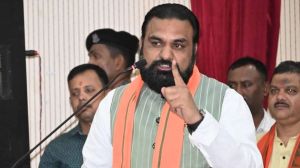India’s taken off but it’s not flying, says The Economist
With the Indian stockmarkets already nervous over the last few weeks, a bigger pinprick to the euphoria around the Indian economy comes in the latest issue of The Economist.

With the Indian stockmarkets already nervous over the last few weeks, a bigger pinprick to the euphoria around the Indian economy comes in the latest issue of The Economist. While calling the UPA government’s move to create quotas in higher education for Other Backward Castes a “cynical piece of vote-grabbing,” the magazine found faults with India’s trade liberalisation (“halting and partial”), labour laws (“deter employment”), the banking system (“allocates credit to the wrong places”), privatisation (“stuck”), foreign investment (“hampered”) and the fiscal deficit, “bloated by ill-directed price subsidies”.
Though it acknowledges Prime Minister Manmohan Singh’s “impeccable reformist credentials,” the magazine says his government “has been timid in pursuing reform, and prone to populism”.
Calling attention to the “desperate need” for government action to “unplug bottlenecks,” the magazine notes that it is not just a question of roads, airports and electricity. “Most village children lack the basic literacy—India’s admired technical institutes will soon be unable to keep pace with the demand for well-qualified, English-speaking engineers, chemists and so on.”
Arguing that India’s high GDP growth rate and booming industry show that India can “fly,” the magazine is skeptical that this success will make India “as a whole richer.”
“Indian business will make a packet if the economy grows at 6 per cent a year, but if the country is to catch up with China in the lifetimes of its young population, India needs to grow much faster. Otherwise poverty will persist for decades and social tensions will mount,” the magazine warns.
“The financial system is inefficient, and allocates most of its capital to the least productive parts of the economy,” it says. While agreeing with Finance Minister P Chidambaram’s stress on financial sector reforms, the magazine says “it is doubtful, however, whether Mr Chidambaram’s government is likely to undertake the reforms needed to generate the capital; mostly they involve the government allowing its own dominant role in the financial system to shrink.”
Of course, India’s “creaking infrastructure” also attracted the magazine’s attention. “Virtually every aspect of India’s infrastructure requires urgent attention. Perhaps the most acute crisis is in electricity, where peak supply falls 11 per cent short of demand—and the demand figure ignores, among much other suppressed appetite for electricity, the 56 per cent of households without connections.” Moreover, of the meager supply, about one-third is ‘lost or stolen in transmission, and a further fifth is distributed almost free to farmers.
Though the privatisation of ports since 1996 and the recent moves for modernizing Mumbai and Delhi airports exude some hope, the magazine finds it “hard to see” where the $100 billion a year that Morgan Stanley expects India will need for infrastructure by 2010, will come from.
In sum, The Economist concludes that though India has “taken off,” it could fly much higher if all these chains and fetters were not tying it down.



- 01
- 02
- 03
- 04
- 05




























